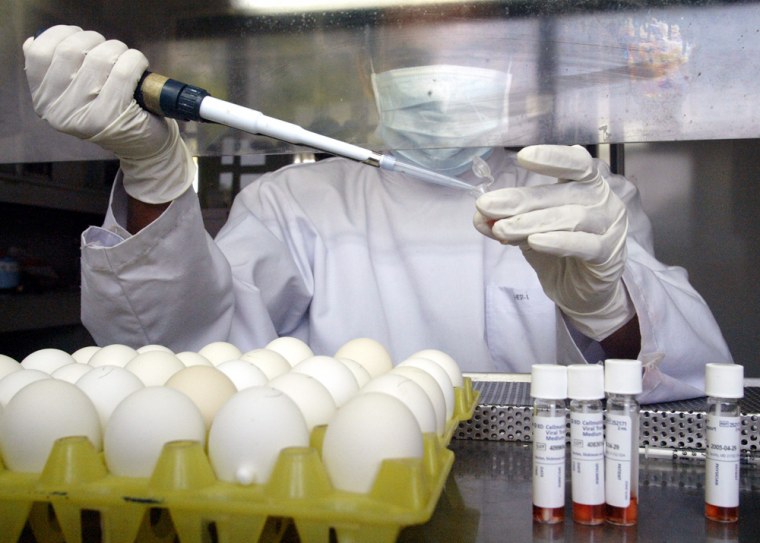Indonesia’s first human bird flu case, coupled with more birds dying elsewhere including Russia, are signs a long-dreaded global influenza pandemic may be approaching, the World Health Organization said on Friday.
Health officials fear the virus will mutate and mix with human influenza, creating a deadly pandemic strain that becomes easily transmissible and could kill millions of people.
Margaret Chan, WHO’s new director for pandemic influenza preparedness, said there had been no known sustained human to human transmission of the deadly virus, but called for stepping up disease surveillance among poultry and humans worldwide.
Indonesia this week confirmed its first death from the virus, which has so far killed more than 50 people since late 2003 in Vietnam, Thailand and Cambodia, roughly half of the known cases.
An Indonesian government official was confirmed as having died of the H5N1 bird flu virus, but results of laboratory tests on his two young daughters who also died are still awaited.
'More and more birds are dying'
“This is more evidence for us to be concerned about developments in the region,” Chan told a news briefing.
“This is perhaps the only time since 1968, which was the last pandemic, that we are getting signs, symptoms and warnings from nature ... More and more birds are dying in different parts of the world — this is the kind of signals, and early warnings that we are referring to.”
Russia this week said it had discovered a disease in poultry in a remote village in Siberia, its first suspected case of bird flu. Around 300 birds died and specimens are being analyzed.
Chan, a former health director of Hong Kong who helped contain its bird flu and SARS outbreaks of 1997, said the WHO’s risk assessment of a global pandemic still stood at three on a scale of six.
“We need to be very vigilant and look for early signals or signs of sustained human to human transmission,” she said. “We need to advise people from farm to table on what actions they can take or can advise communities to take to reduce that risk.”
Preventative measures
Mixed poultry trading — where ducks, geese, chickens and sometimes pigeons are sold side-by-side at market — can be an "enabling environment for the virus to mutate," Chan said.
Recommended measures include separating poultry, vaccination of poultry, and other biosecurity measures on farms, she said.
“Our experience is that if you are prepared for a pandemic you get less impact in terms of mortality and morbidity and social and economic disruption,” she said.
Chan also said that the WHO, a United Nations agency, was still pressing China to allow international laboratories to examine specimens from birds in Qinghai, where the H5N1 virus has killed more than 5,000 birds from five species.
The WHO is urging China to test the other 184 species in the area, fearing birds which appear healthy could also spread the disease. This would help understand the evolution of the virus and inform public health decisions, according to Chan.
